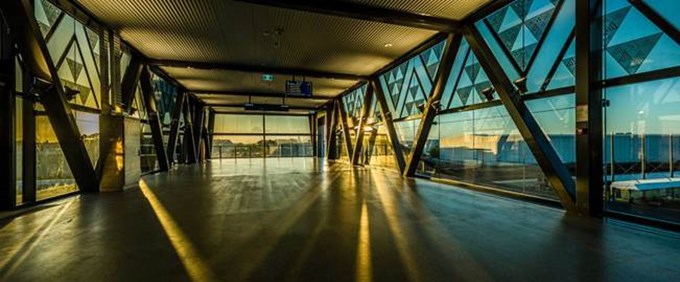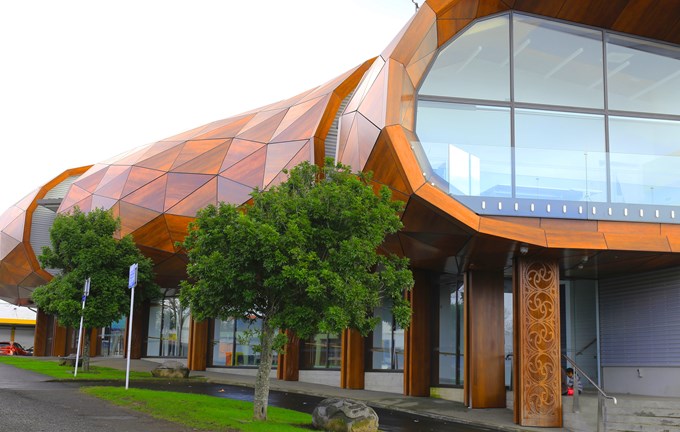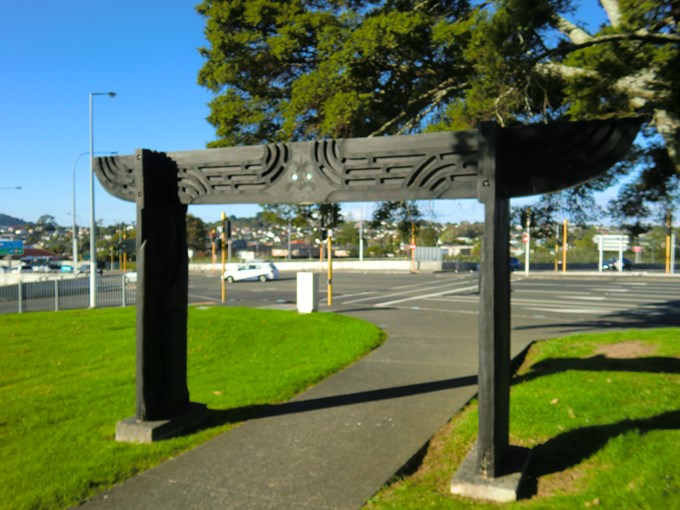Phil Wihongi smiles as the voice in the lift announces he is on te hau: papa rua tekau mā tahi – level 21.
He has instigated this small but significant change in Auckland Council’s Albert Street building.
It’s just one more step towards experiencing Auckland as Tāmaki Makaurau, bringing more of our Māori identity into our places and spaces.
Championing Māori design
Phil (Ngati Hine,Ngā Puhi) is Māori Design Leader in the Urban Design Strategy Unit at Auckland Design Office. He believes Māori design will help move Auckland to Tāmaki Makaurau, a place that better reflects our culture, our identity and our place in the world.
That’s a big call, but he explains by championing Māori design practice, Auckland Council is demonstrating its commitment to the Māori communities of Auckland and Te Titriti o Waitangi.
As part of its online Auckland Design Manual for designers, developers, architects and builders, Auckland Council has developed the Māori Design Hub. This promotes the application of the Te Aranga Māori Design Principles as a means of producing locally responsive, culturally grounded design. Phil says these are giving effect to our treaty partnership.
Phil joined Auckland Council a year ago, prior to which he worked with the Raukawa Charitable Trust in South Waikato. Happy to be back in Tāmaki, the born and bred Aucklander is excited to bring his commitment to Māori design and cultural landscapes home.
A community of practice
A core part of his job as Māori design leader is to create an environment that allows Māori design thinking to flourish. This entails:
- highlighting Māori design exemplars
- documenting best practice methods
- establishing both strategic and project-based systems and processes.
“With so much development occurring and in the pipeline currently, what we need now are outstanding built examples which demonstrate good Māori design practice and outcomes,” he says. “There is nothing like success to breed success.”
Phil calls this ‘establishing a community of practice’.

Design principles
Māori design exemplars increasingly reflect application of the Te Aranga Māori Design principles. There are seven principles, however they are all dependent on the first principle – mana. Without this, none of the other principles can be applied authentically.
In this context, mana reflects the status of iwi and hapū as mana whenua being recognised and respected.
“You have to address the principle of mana before considering any of the other principles,” says Phil.
This is particularly complex in Tāmaki Makaurau, as 19 iwi are recognised by Auckland Council as mana whenua. As such, council promotes processes for mana whenua to express an interest in the area of development or the project at hand. These groups are bought together to establish a forum for discussion and the exchange of ideas. Ideally this takes place right at the start of a project or development.
A favourite saying of Phil’s refers to the need to “’try and locate the spring waters beneath your feet to get to the essence of that place’. From a Māori sense the essence is held by mana whenua.”
Planning Māori design with mana
An example where mana is not evident is the Waharoa (gateway) on the Viaduct. According to Phil, this was created in a ‘reactive’ state for the America’s Cup challenge. At the last minute, the need for ‘something Māori’ was identified. The result is, to Phil’s mind, an example of poor design and process. He points to substandard materials and poor workmanship, as well as the inappropriate use of materials.
In contrast, a successful Waharoa that blends heft, artistic integrity and mana finds home on the eastern slopes of Puketāpapa maunga, framing the entrance to the SH20 cycleway from Dominion Rd.
A current good practice example is occurring within the Mt Albert Townscape upgrades. Working alongside iwi, council has engaged Ngai Tai ki Tāmaki artist Tessa Harris to work with the project consultant design team. Tessa was given a clear brief, based on iwi narratives and the Te Aranga Māori design principles.

This has infused the build with Māori design thinking. There are no stand-alone art pieces created through her collaboration, however the Te Aranga Māori design principles have been integrated through the whole project. They find their form in materiality, street furniture, pattern, selection of species, and decorative elements that speak to the whole.
Among an increasing number of built exemplars are Ngāti Whātua Ōrākei’s Kainga Tuatahi at Takaparawhau, Te Oro at Glen Innes and the new Ōtāhuhu station transport interchange
Beyond the centre to the district
Since joining Auckland Council Phil has been involved with many exciting projects across the region, from work on the central business district streetscapes aligned with the Central Rail Link to early planning for the historic Ōtāhuhu waka portage route.
While projects such as this are challenging, they are also incredibly rewarding. As the city grows and development keeps occurring, we can expect see more of our Māori identity in our places and spaces.


